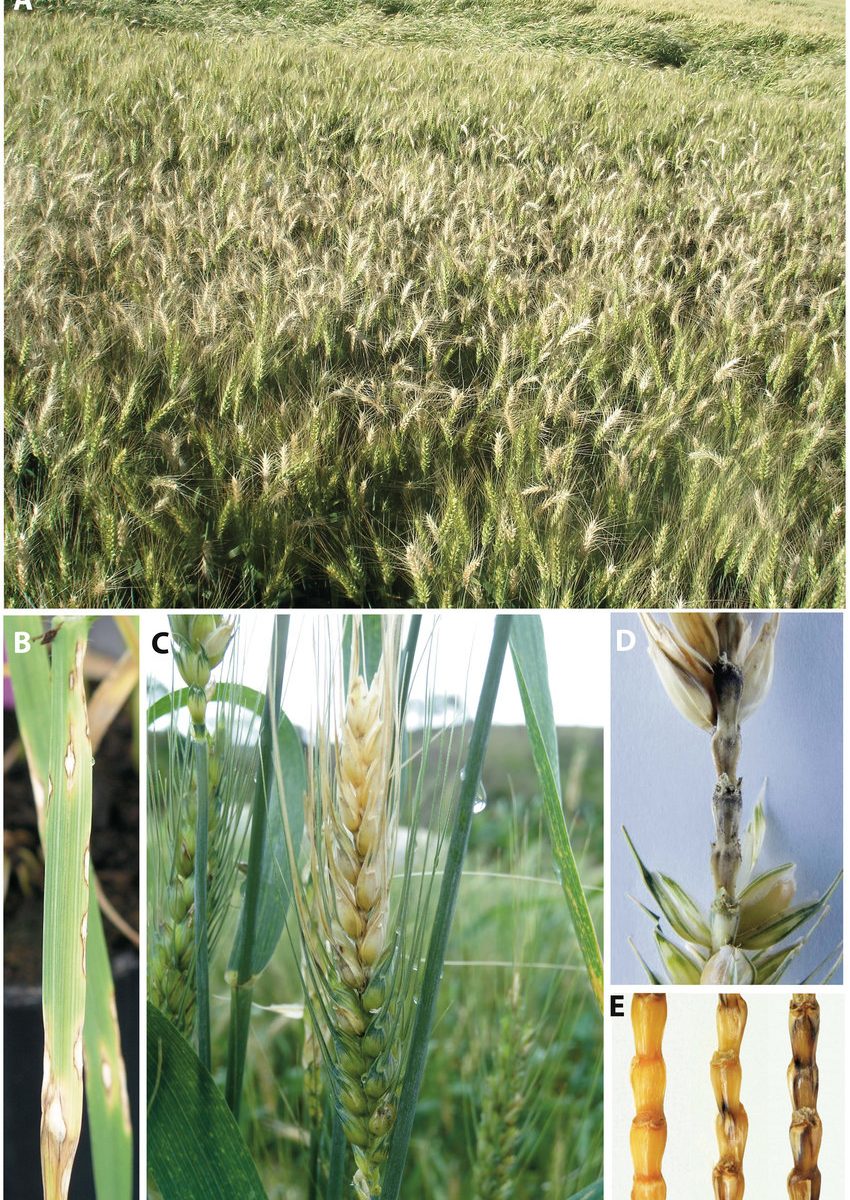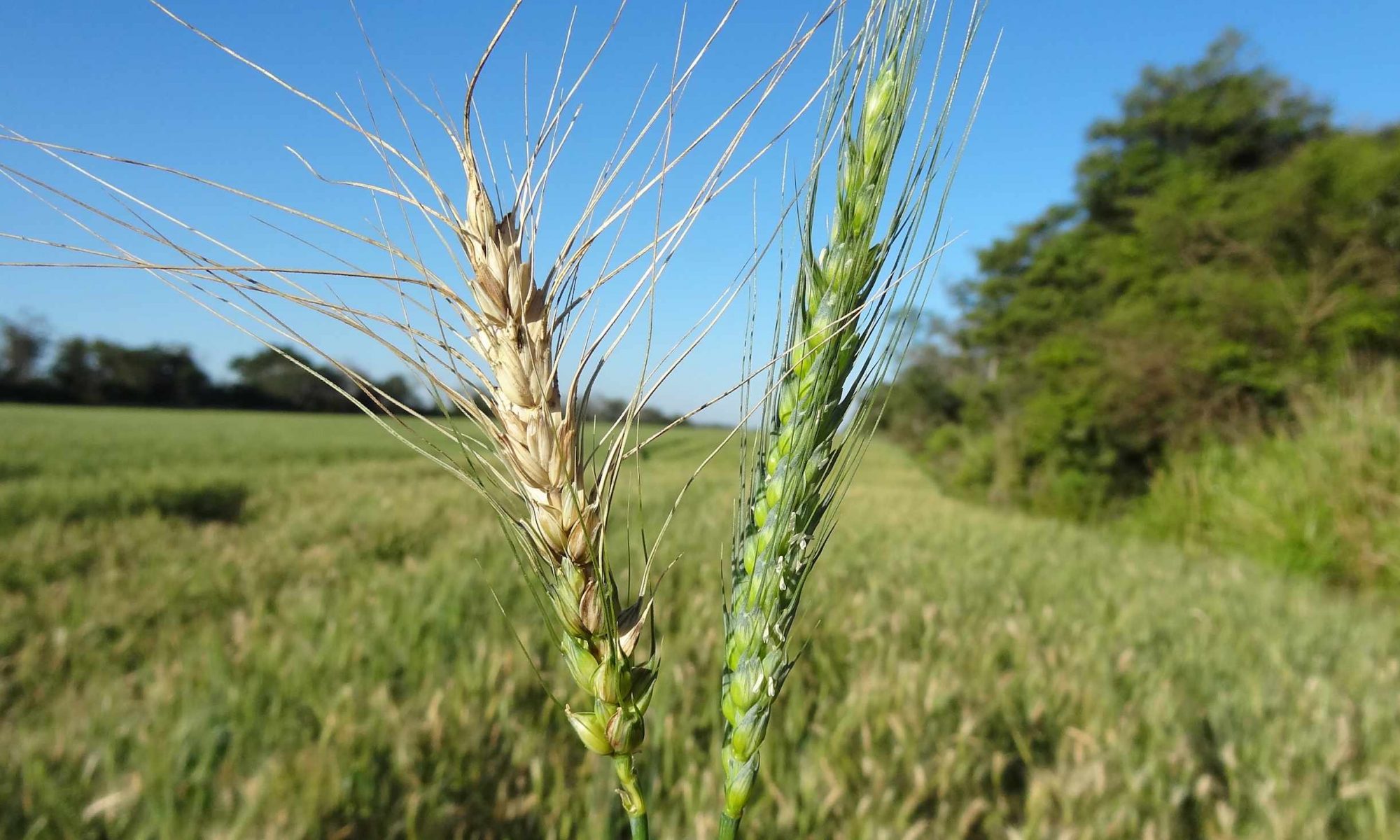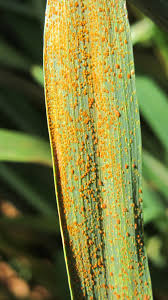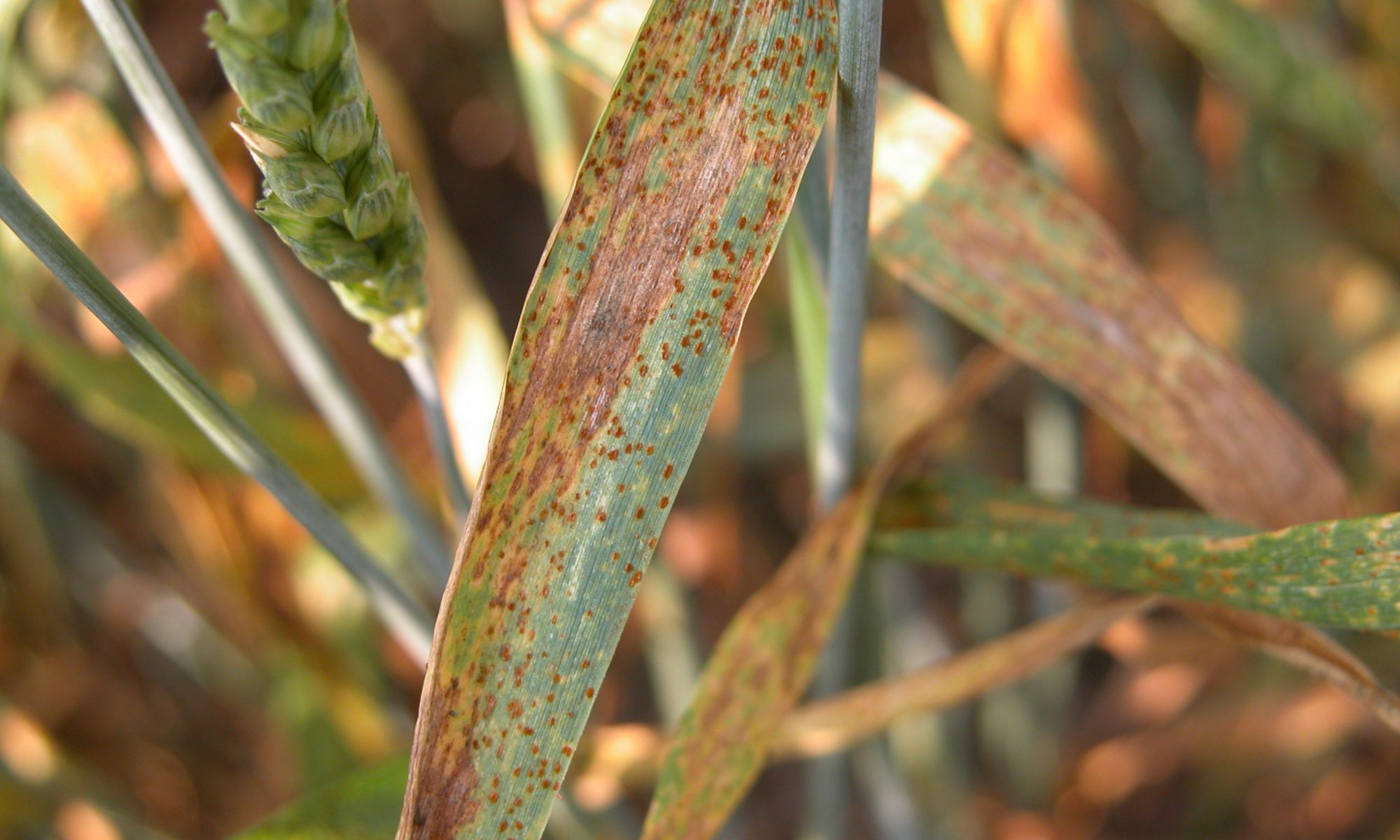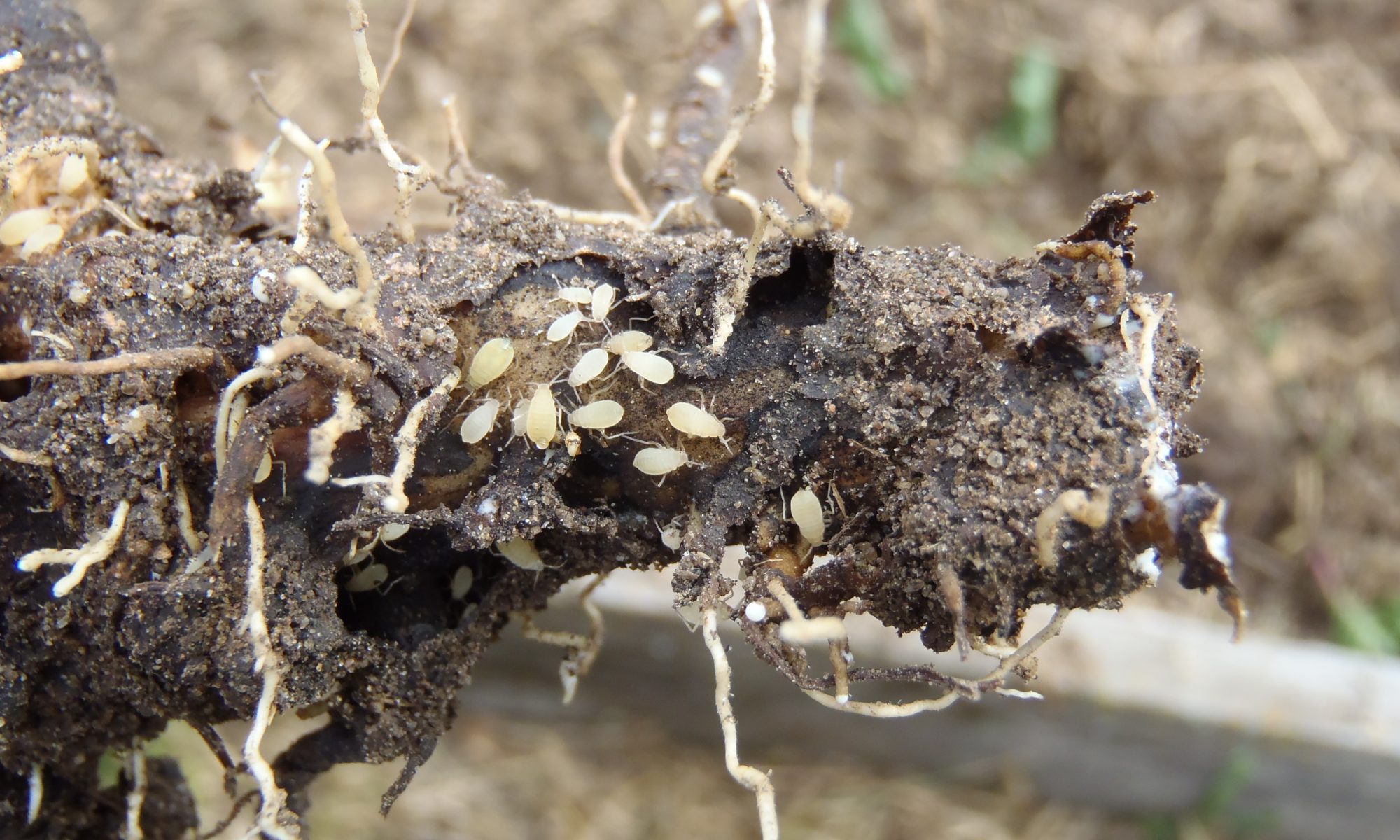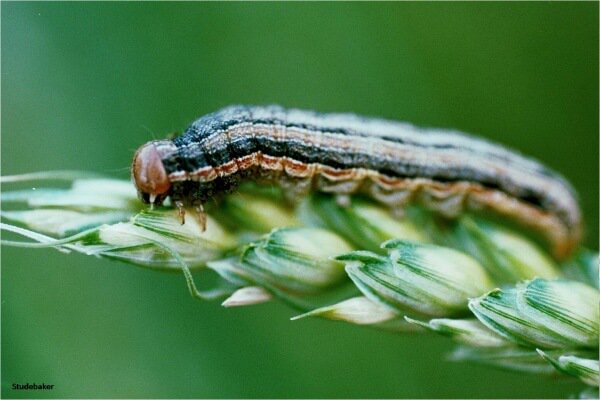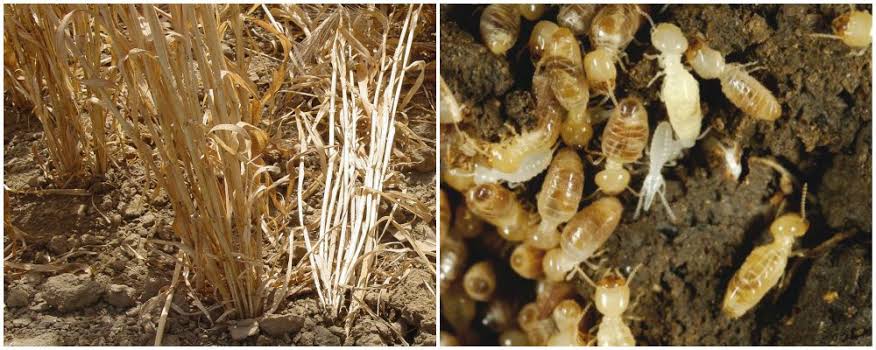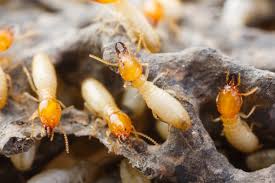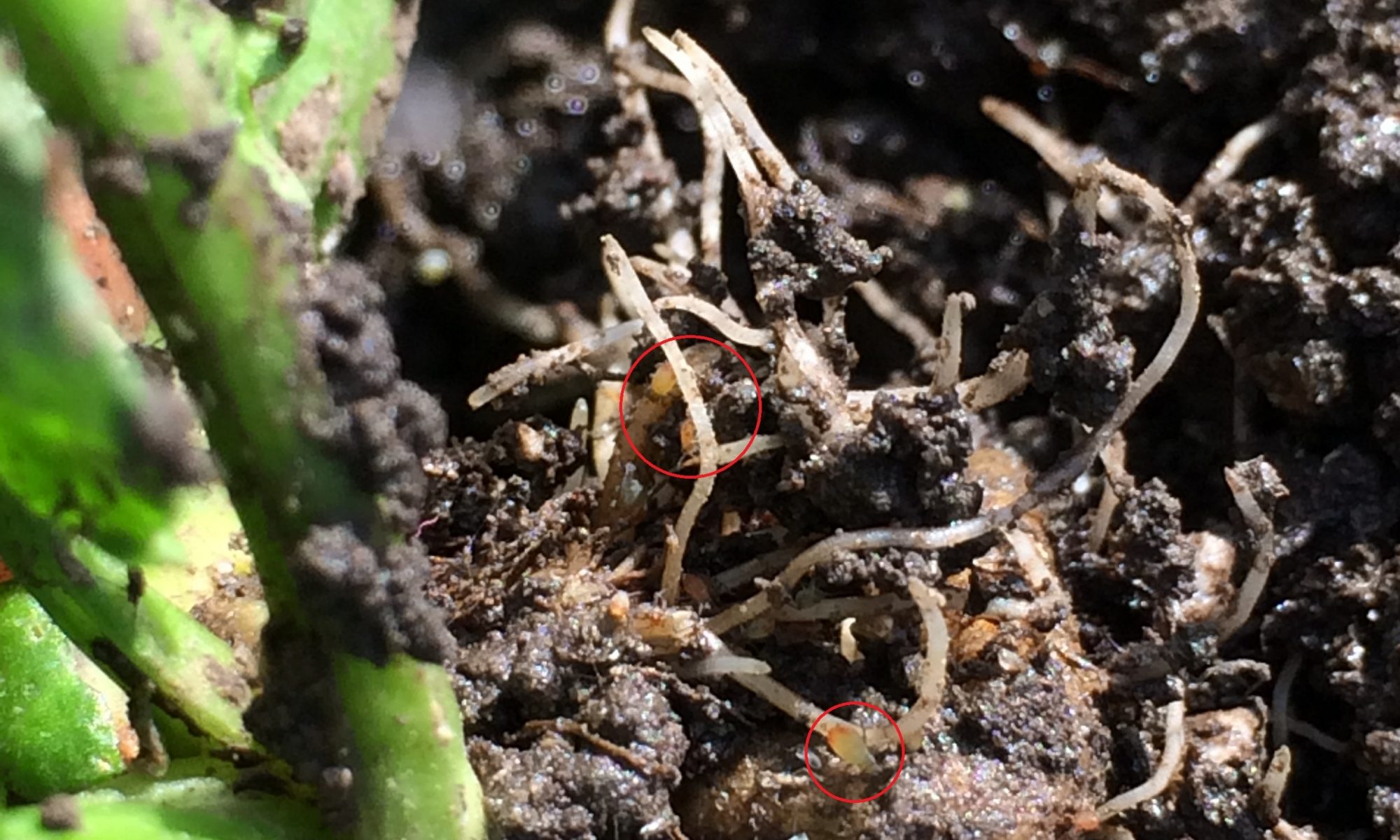- In wheat crop, the stage of filing the grain or milking stage is very important.
- At this stage, grains are filled inside the spick. At this time, irrigation is very important.
- Along with for good growth of the grain, spraying of homobrassinolide 0.04% @ 100 ml with 00:52:34 @ 1 kg / acre should be done.
- Urea @ 40 kg and micronutrients @ 8 kg / acre should be given as the third installment of fertilizers.
Management of wheat head blast diseases
- Use disease-free certified seed.
- Remove and destroy the disease infected wheat plants to check the spread of disease.
- Treat the seeds with carboxin 37.5 +thiram 37.5% @ 2.5 gm / kg seed.
- Weekly Spray Kasugamycin 5% + Copper Oxychloride 45% WP 320 gm/acre or
- SprayThiophanate methyl 70% Wp 300 ml/acre.
Identification of wheat head blast diseases
- Affected plants show typical eye-shaped lesions with light gray centers and dark brown spots on wheat leaves.
- The blast affected wheat spikes, with typical bleached head symptoms from the point of infection.
- complete bleaching of a wheat spike above the point of infection by blast fungus.
Management of Rust disease in Wheat
-
- Leaf rust is caused by the fungus.
- The first signs of the disease (sporulation) occur 10-14 days after infection
- Leaf rust produces reddish-orange coloured spores which occur in small, 1.5 mm, circular to oval-shaped pustules.
- These are found on the top surface of the leaves, distinguishing leaf rust from stem rust which is found on both surfaces of the leaf.
- The spores require 15 to 20ºC temperature and free moisture (dew/rain/irrigation) on the leaves to successfully infect wheat.
Management-
- Crop rotation is very important.
- Growing resistant varieties is an economical and environmentally friendly way of disease reduction.
- During the growing season, active crop monitoring is very important for an early detection of diseases.
- Avoid repeated use of fungicides with the same active ingredient.
- Spray Kasugamycin 5% + Copper Oxychloride 45% WP 320 gm/acre or Propiconazole 25% EC 240 ml/acre.
Like and share with other farmers by clicking on button below
ShareIdentification of wheat rust
- Leaf rust is caused by the fungus.
- The first signs of the disease (sporulation) occur 10-14 days after infection
- Leaf rust produces reddish-orange colored spores that occur in small, 1.5 mm, circular to oval-shaped pustules.
- These are found on the top surface of the leaves, distinguishing leaf rust from stem rust which is found on both surfaces of the leaf.
- The spores require 15 to 20ºC temperature and free moisture (dew/rain/irrigation) on the leaves to successfully infect wheat.
Control of Root Aphid in Wheat
- This insect is active from November to February.
- Damage is more in rainfed and late sown crop.
- Yellowing of young plants is observed due to root aphids. In this case minute yellowish brown aphids may be present near the base or on the roots of the plant.
- Aphids also vector a viral disease named barley yellow dwarf virus (BYD). Yield of infected wheat plants can be reduced by 50%.
Control-
- Avoid late sowing.
- Avoid use excess nitrogen fertilizers.
- If the infestation in standing crop, Spray imidacloprid 17.8% SL @ 60-70 ml/acre.
- Or apply thiamethoxam 25% WG @ 100 gm/acre in soil with fertilizer/Sand/soil before irrigation.
Like and share with other farmers by clicking on button below
ShareHow to control Armyworm/ Cutworm in Wheat
-
- The primary symptom is defoliation of the plant.
- Larvae feed on the leaves, chewing from the edges to the midrib, or on the head of cereal plants.
- Heavy infestations can be very destructive; larvae may climb the plant. Some species may be found feeding at the soil surface, others, underground feeding on roots, and then there are some who feed inside the stem.
- The armyworm feeds during dawn and dusk period as it is actually shy of sunlight.
Management –- Look for larvae and signs of damage beginning in early spring. Caterpillars will often be found feeding on the undersides of leaves and on fresh growth. Handpick the worms you discover and don’t be tempted to crush them between your thumbs. Instead, drop them in a bucket of soapy water.
- Use 4-5 bird perches to attract birds.
- Spray Emamectin Benzoate 5% SG @ 100 Gm per acre.
- Spray fipronil 5% SC @ 400 ml per acre.
Like and share with other farmers by clicking on button below
ShareManagement of termite
- Apply deep plowing before sowing.
- Use well rotten FYM in the field.
- Fill kerosene in a mound of termites.
- The seed should be treated with Chlorpyriphos (20% EC) @ 5 ml/kg of seed before sowing.
- Broadcast Chlorpyriphos (20% EC)@ 1 litre/Acre with any fertilizer
- Beauveria bassiana 1 kg/ acre
- broadcast Fax grannule 7.5 kg/ acre.
Share
Identification of termite on wheat crop
- Termites damage the crop soon after sowing and sometimes near maturity.
- They feed on roots, stems of growing plants, even dead tissues of plant-feeding on cellulose.
- The damaged plants dry up completely and are easily pulled out.
- The plants damaged at later stages give rise to white ears.
- Infestation is heavy under unirrigated conditions and in the fields where un-decomposed farmyard manure is applied before sowing.
Management of root aphid in Wheat
- Avoid late sowing.
- Avoid using excessive nitrogen fertilizers.
- If the infestation in standing crop, Spray imidacloprid 17.8% SL @ 60-70 ml/acre.
- Or apply thiamethoxam 25% WG @ 100 gm + beauveria bassiana 2 kg/acre in soil with fertilizer/Sand/soil before irrigation.


